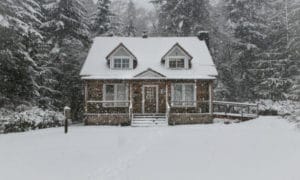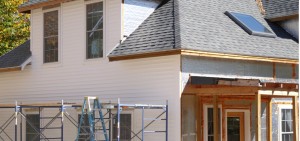Choosing the perfect home siding material and profile can be a daunting task full of questions. With significant advances in siding technologies in recent years, however, you really can’t go wrong choosing between vinyl, steel or cement siding materials. It really depends which siding attributes are right for your tastes and home.
Vinyl Siding
Delivering exceptional performance in an array of colors and designs, vinyl siding is more popular than ever. Another reason vinyl siding has remained popular through the years is its affordability as a practical and desirable home cladding.
Following are some of the attractive attributes of vinyl:
- Choose from several colors and styles.
- It replicates the visual look of other materials, especially wood.
- Available in horizontal, vertical, shake, shingle, dutch lap and seamless installations.
- Holds up very well under the elements.
- It won’t rot, rust or dent, and it’s insect resistant.
- Requires less maintenance than wood sidings.
- Energy-efficient installations are available with solid core.
Steel Siding
Steel siding is a very durable home cladding that, like vinyl, is available in practically any color you may want. The strong steel sheets, panels and shingles are typically coated with a protective layer of zinc or vinyl, which protects the steel from rusting.
Following are some of the attractive and strong attributes of steel siding:
- Steel siding is resistant to fire and insects.
- It’s also durable against extreme temperatures, ice, dents and cracking.
- Maintenance is on par with vinyl siding — occasionally washing it to keep it looking new.
- Steel may be manufactured to replicate the look of practically any cladding — including brick.
- You may choose darker colors since steel is resistant to fading.
- Give your home a seamless look with on-site fabrication.
- Coated with cool-technology materials, steel siding is energy efficient.
- Steel can be installed any time of year.
- Steel siding typically offers fantastic warranties.
Cement Siding
Fiber cement siding is a composite manufactured of sand, cement and cellulose fibers. Aesthetically, cement siding is often installed in an overlapping horizontal board profile, clapboard and imitation shingles. Additionally, fiber cement is manufactured in sheets, which is also used for soffit lining and tile underlay, and utilized for fascias substitutes.
Following are benefits of installing fiber cement siding:
- Fiber cement may be manufactured to give the warm look and feel of wood, but without the more intensive maintenance.
- It may be manufactured for a smooth finish, or to replicate practically any material.
- Cement siding is resistant to water, fire, rot and insects.
- Paint your fiber cement siding any color you like!
- Extremely durable, fiber cement siding may last 50 years.
- Fiber cement is environmentally friendly.
Unlike vinyl and steel, fiber cement siding needs to be painted every 15 to 20 years. This requires more labor and expense down the road, but it also means you can change the color of your home as you see fit.
To learn more about your options for siding materials, please contact Innovative Building & Design. Also, be sure to catch next month’s article, “Choosing Sides Part 2: Horizontal Vs. Vertical Vs. Shingle Siding.”




